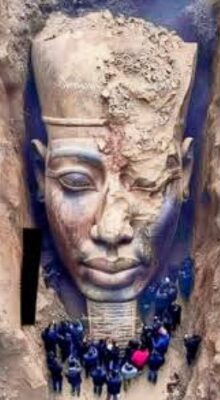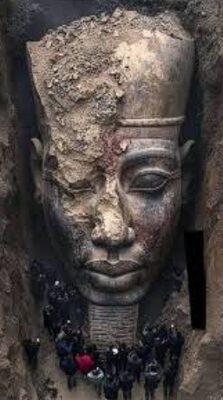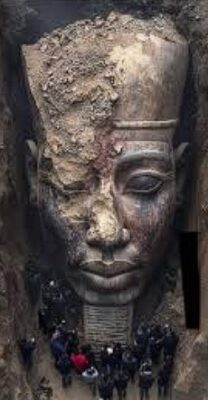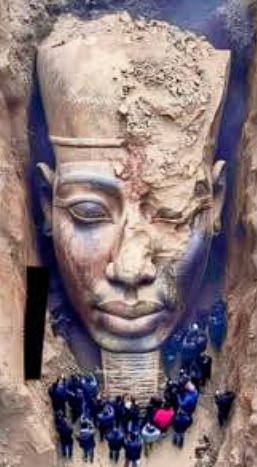The Majestic Colossal Statue of Ramses II
An Iconic Monument of Ancient Egypt
Standing at an imposing height of 26 feet, the colossal statue of Ramses II is a true masterpiece of ancient craftsmanship. Made from solid quartzite and weighing an astonishing 83 tons, this statue embodies the grandeur and engineering prowess of ancient Egypt. It is not just a piece of art; it is a symbol of power, leadership, and resilience that continues to captivate historians and visitors alike.
Discovery and Restoration of the Statue
Unearthed in 1954, the statue of Ramses II was a groundbreaking archaeological find that shed light on the incredible legacy of this powerful pharaoh. Despite centuries buried beneath the sands of time, the statue was remarkably well-preserved. After meticulous restoration, it was moved to the Grand Egyptian Museum in Giza, where it now stands as one of the most significant exhibits, drawing thousands of admirers from around the world.

Ramses II: The Great Pharaoh of Egypt
A Reign of Over Six Decades
Ramses II, also known as Ramses the Great, ruled Egypt for an impressive 66 years, making him one of the longest-reigning and most influential pharaohs in history. His rule was marked by military conquests, architectural achievements, and a thriving civilization that left an enduring impact on Egyptian culture and beyond. His leadership brought stability, prosperity, and artistic advancements that shaped the ancient world.
The Architectural Legacy of Ramses II
Ramses II was not only a warrior king but also a visionary builder. He commissioned numerous monumental structures, including the iconic Abu Simbel temples, the Ramesseum, and expansions to Karnak and Luxor temples. These architectural marvels, adorned with intricate carvings and colossal statues, stand as testaments to his ambition and grandeur. His contributions to Egypt’s cultural and architectural landscape continue to inspire awe and admiration.

The Significance of the Statue’s Relocation
A Journey to the Grand Egyptian Museum
After its discovery, the colossal statue of Ramses II was carefully restored and relocated to the Grand Egyptian Museum in Giza. This move was not just a logistical effort but a symbolic gesture to preserve and showcase the grandeur of Egypt’s history. Today, the statue stands as a centerpiece in the museum, allowing visitors to marvel at its magnificence and learn about the remarkable legacy of Ramses II.
A Testament to Egypt’s Rich Heritage
The relocation of the statue serves as a powerful reminder of Egypt’s rich cultural heritage and historical significance. It highlights the importance of preserving ancient artifacts and ensuring that future generations can witness the grandeur of their ancestors. The Grand Egyptian Museum, housing countless relics from Egypt’s glorious past, provides an immersive experience that connects visitors with the remarkable achievements of one of the greatest civilizations in human history.
Reclaiming Our History: Kings and Queens Before Enslavement
The True Origins of Greatness
The legacy of Ramses II and ancient Egypt challenges the often-misrepresented narrative of African history. Long before the era of enslavement, African civilizations thrived, demonstrating unmatched ingenuity, strength, and leadership. Pharaohs like Ramses II ruled vast and prosperous empires, constructing architectural wonders, advancing science, and influencing global culture.

A Legacy of Power, Brilliance, and Resilience
The colossal statue of Ramses II is more than just an artifact; it is a powerful symbol of Africa’s rich and unshakable legacy. It reminds us that history did not begin with oppression but with greatness. By celebrating the achievements of ancient African civilizations, we reclaim a history rooted in power, brilliance, and resilience—one that continues to inspire and shape the world today.
Conclusion
The deeper we dig into history, the more we uncover the extraordinary achievements of our ancestors. The colossal statue of Ramses II stands as a testament to the might, intelligence, and vision of one of Egypt’s greatest rulers. From its discovery in 1954 to its grand display in the Grand Egyptian Museum, this masterpiece continues to fascinate and educate people around the world. As we honor our past, we must recognize that we were kings and queens long before enslavement—our history is one of power, ingenuity, and unyielding strength.


CÁC TIN KHÁC
Mary Walton: The Forgotten Inventor Who Helped Clean Up America’s Cities
Tomb of Queen Nefertari in the Valley of the Queens, Egypt
Discover the Hypostyle Hall of the Temple of Hathor at Dendera
Venus de Losange: Unveiling the Mystery of a 20,000-Year-Old Paleolithic Icon